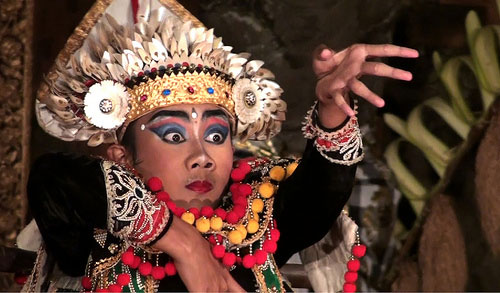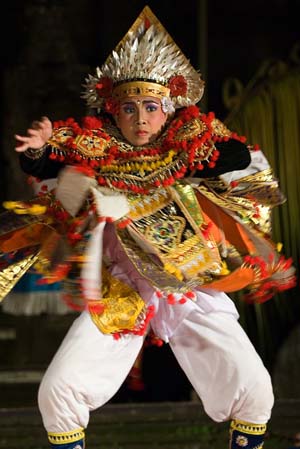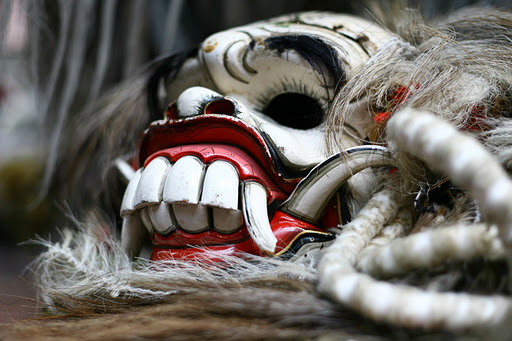The Baris, a traditional war dance, glorifies the manhood of the triumphant Balinese warrior. The word baris means ‘line’ or ‘file’ and refers to the warriors who fought for the kings of Bali. There are numerous kinds of Baris, distinguished by the arms borne by the dancers.
Originally, the dance was a religious ritual: the dedication of warriors and their weapons during a temple feast. From the ritualistic Baris Gede grew the dramatic Baris, a story prefaced by a series of exhibition solo dances that show prowess in battle. It is from these that the present Baris solo takes its form. A good Baris dancer must undergo rigorous training to obtain the skill and flexibility that typifies the chivalrous elegance of the dance.
Derived from the word baris which means a line of troops, the Baris Dance is a war dance depicting warriors preparing to confront the enemy. The powerful rhythm of the accompanying Gong Kebyar and Gong Gede, intensifies the movements. The dancers come out on stage holding spears or swords and shields, depending on the type of Baris Dance; their firm steps making a convincingly loud sound. They really look like warriors going to the war, while in fact the dance is also performed to welcome The Gods and Ancestors to earth.
The dance is usually performed by a group of eight to 40 men wearing the traditional garb of a warrior with ornaments on the chest and back, and also a head ornament. The costume that the dancers wear differs depending on regency because almost all regencies in Bali have a signature Baris dance. In the Baris dance staged at the beginning of cremation ceremony in Badung Regency, for example, the dancers wear a black and whith checked costume and tote black and white checked spears. While in Jemberana Regency the predominate colors in red.
A Baris dancer must convey fierceness, disdain, pride, alertness, compassion, and regret — the characteristics of a warlike noble. The Baris Dance is accompanied by gamelan orchestra, and the relationship between dancer and orchestra is an intimate one; the gamelan must be entirely attuned to the changing moods of the warrior’s will.
At first, the dancer’s movements are studied and careful, as if he were seeking out foes in an unfamiliar place. When he reaches the middle of the stage, however, hesitation gives way to self-assurance. He rises on his toes to his full stature, his body motionless with quivering limbs. In a flash, he whirls on one leg and his face renders the storm of passions of a quick-tempered warrior.
The Baris dance is a sacred dance performed not only during cremation ceremonies but also temple anniversary ceremonies and other holy celebrations because it is believed that during these ceremonies The gods, Goddesses and Ancestors come down to earth to give blessings. So the dance is performed to welcome them, to entertain and also as a thanksgiving.






